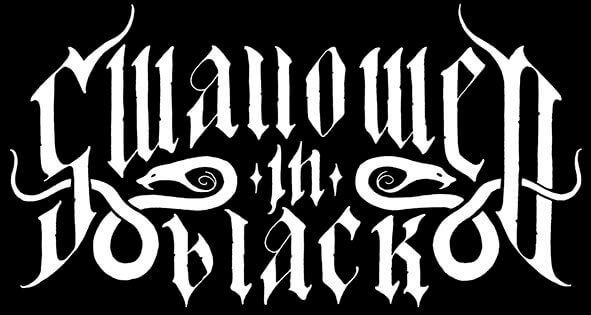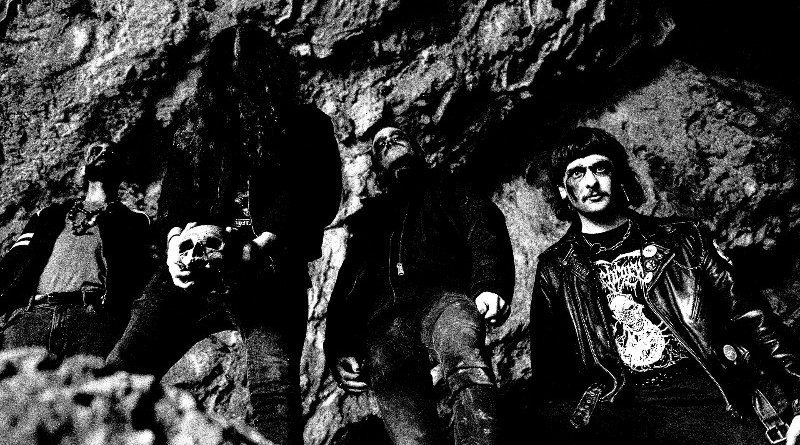“IT IS OF THE UTMOST IMPORTANCE TO CREATE SOMETHING UNIQUE” – S.P.S. (CH’AHOM)
The dead speak across the aeons through the eerily unconventional soundscapes of ‘Knots of Abhorrence’, the immersive and timeless debut full-length offering of Ch’ahom – an intoxicating, labyrinthian odyssey that eschews the shorter, sharper shocks of the band’s demo years in favour of more ambitious and involved compositions but without betraying the band’s primitive, tribal roots. Founder member and lead guitarist S.P.S. discusses ancient death rituals, forgotten cults, elaborate places of worship that defy explanation, the immeasurability of freedom, and of course indecipherable Andean accounting apparatuses.
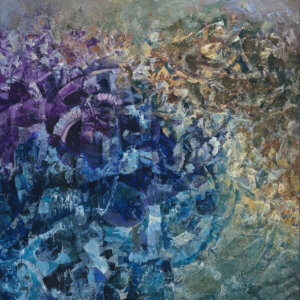 Timeless and acknowledging neither boundaries, borders nor stereotypes, the Ch’ahom sound seems to be animated more by the blood and spirit of the ancient Aztecs and murderous Mesoamerican madness rather than anything that could be construed as particularly European in origin. What inspired a horde of death-worshipping underground dwellers from the Rhineland to take this refreshingly-unorthodox thematic approach to creating Black / Death Metal that honours the violence and mysticism of ancient pre-Hispanic civilisations and customs?
Timeless and acknowledging neither boundaries, borders nor stereotypes, the Ch’ahom sound seems to be animated more by the blood and spirit of the ancient Aztecs and murderous Mesoamerican madness rather than anything that could be construed as particularly European in origin. What inspired a horde of death-worshipping underground dwellers from the Rhineland to take this refreshingly-unorthodox thematic approach to creating Black / Death Metal that honours the violence and mysticism of ancient pre-Hispanic civilisations and customs?
“It was definitely A.G.A.’s passion for this topic, combined with our shared will to try for new frontiers, that led us to incorporate a lot of different pre-Hispanic cultures. If you look at A.G.A.’s band before Ch’ahom (Morbid Blood Kult), you can see a mixture of Lovecraftian and pre-Hispanic themes; when he called upon us to start this band, he was quite clear about wanting to narrow the lyrical, conceptual content down to this great pool of different art epochs, cultures and places that existed in the areas that are now commonly referred to as ‘South America’ and that ended with the brutal colonialization of said region.”
For this deeply ritualistic and violent exploration / celebration of long-forgotten ancient war cults and death rituals from pre-Columbian South and Central America, specifically what influences (ideological, historic and musical) are you incorporating into your unique and intoxicating brew?
“The fascination with mysticism in general does not – or at least not only – stem from a death and blood cult. For me personally it means a connection with an ideological place where the so-called outside world could freely diffuse through the human form. Where we were not hermetically sealed off from our surroundings, where the setting sun could release an emotional reaction in a human as profound as a friend’s passing. (This makes attributing these natural influences with human, intentional traits as well as trying to control or soothe them by means of rituals very comprehensible; for our rational side at least.) (Today we are clearly separated from what is ‘outside’. Freud, for example, states that consciousness begins in the moment where the child understands it is separate from its mother, that it does not receive sensory information from her body parts.)
“We live in times of total information, measurement and the ongoing dissection of all parts of life as well as the human form itself. In this worldview, we are exactly the countable sum of our parts and nothing more. We hold reason and logic high and above that we hold empiric, positivistic knowledge. Our minds cannot grasp the world-feeling humans possessed in past times. It relates to our modern world-understanding like our wake semantic logic relates to our ‘wildest’ dreams’ non-causal impressions or the synaptically-altered states of mind we experience on psychoactive drugs that are so hard to remember later especially because they are so different in their subject-object (or inside-outside) relationships.
“All of these ideas described here come from a highly analytical standpoint whereas the place they wrap around stays unarticulated and inarticulable. This is the place we want to create in with Ch’ahom. I can merely try to attribute feelings to it: between holy and dangerous, in a daydream-like state of mind.”
Is your passion for the mystical limited to this region and era or do you also take an interest in historical / mythical events that took place in other times and places around the world?
“We definitely all have our own little fields of interest in historical events, places or religious practices, but I often feel humbly that we can’t outdo A.G.A.’s expertise, hence why he writes a great deal of our lyrics. It’s great to visit religious sites when we are on tour and realize that places of worship are extremely diverse, just as the reasons and purposes that rituals held in these places adhere to. We hope to do so more in the future, within Europe, hopefully also outside of Europe, and beyond.”
One such place of interest might be Chavín de Huántar, in what is now called Peru, which (based on artefacts and ruins dating back more than 3,000 years) was a ceremonial gathering place for an ancient cult of pre-Inca people to worship and participate in rituals – and after which the second offering on the stunning debut Ch’ahom full-length, ‘Knots of Abhorrence’, is named. Although, judging by the fate that befalls the protagonist in ‘Chavín de Huántar’ – confusion, delusion and death – perhaps this one is to be avoided! Do you think our ancient ancestors – those civilisations that were displaced and replaced by colonial conquerors – might curse us across the millennia if they could see us now?
“Honestly I don’t know. I don’t think they’d have an easy task figuring out whatever the fuck we’re doing with our lives, same as we’re struggling to piece the bits of info together that we have on their culture.
“The Chavín de Huántar fascinates us as an architectural phenomenon, as a place of spirituality and of power. A sort of religious monopoly run from a temple placed in the most unlikely of places.”
 The title track(s) on the album, ‘Knots of Abhorrence I’ and ‘Knots of Abhorrence II’, reference the Quipu (or talking knot) – an ancient accounting and recording apparatus used by Andean peoples. Fashioned from strings, the cords stored numeric values and other information encoded as knots but modern man has been unable to decipher exactly how these devices were used and whether / how they carried phonetic information. Even when armed only with the most basic devices or tools, were these long-gone civilisations possessed with an intuitive creativity, ingenuity and intelligence that seems surprisingly ‘advanced’ and which puts a lot of today’s population to shame?
The title track(s) on the album, ‘Knots of Abhorrence I’ and ‘Knots of Abhorrence II’, reference the Quipu (or talking knot) – an ancient accounting and recording apparatus used by Andean peoples. Fashioned from strings, the cords stored numeric values and other information encoded as knots but modern man has been unable to decipher exactly how these devices were used and whether / how they carried phonetic information. Even when armed only with the most basic devices or tools, were these long-gone civilisations possessed with an intuitive creativity, ingenuity and intelligence that seems surprisingly ‘advanced’ and which puts a lot of today’s population to shame?
“I find it rather hard to answer this question, because for us it is not easy to say in which mode of organisation these things had been researched and to which part of the population they were made accessible. We know for certain that in some Mesoamerican cultures knowledge and the protection of such was a means of exerting power. This insight makes the idea of intuition much less apparent. On the other hand, there’s a great deal of creativity to be found in all kinds of forms, be it architecture or language, for example. The Mayan hieroglyph system did have certain set symbols for certain syllables, but still these were combined into unique artworks with the same word written in a slightly different way by each writer or artist. If you compare this kind of freedom to today’s maxim of most effective, easy and fast to reach language. you can see that we lost some of that space for individual expression to cold-hard communication of profitable information.”
In many respects, Ch’ahom stands as the very antithesis of what might commonly be accepted or recognised as a German or European Black Metal ‘sound’ (if, indeed, such a thing exists). While the soundscapes are gloriously raw and lo-fi and dripping of death, how important is it to you to craft unconventional and aggressive art that challenges the listener, rather than the derivative, same-sounding mediocrity that most bands today shamelessly excrete?
“It is of the utmost importance to create something unique. Outlining the words of Breton: art is of interest if the creator is saying something nobody else could have said. To seek out this space is the obligation of anyone contributing to the cultural oeuvre of this world and divides between a hobbyist that merely copies the existing and an artist that tries to aestheticize an experience unique to their existence or one they’ve witnessed, learned about and that has moved them. Moved them because they are themselves. This space is one without clear borders to its adjacent places, of course, and very often someone will learn their profession by copying and only later will start using this artisanship to infuse it with their own experience.
“All passion and force of will to create something that rises above the average aside, it is to be discussed if there can ever be something new. A reasonable understanding of this is that everything that exists is merely a new mixture of references, a recontextualizaton of past cultural products. The strategy that leads us out of this dilemma is negative thinking: only clearly defining what you reject instead of defining what you want to become leaves an empty space, a space that you have freed up to fill with your self.”
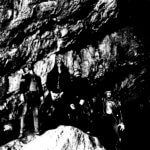 As observers of history, as well as honouring our primitive past, are you at the same time rejecting the modern world in which humanity is so submissively and meekly imprisoned? Do you stand opposed to modernity and the perilous path the world is taking today? As a species, are we regressing rather than progressing?
As observers of history, as well as honouring our primitive past, are you at the same time rejecting the modern world in which humanity is so submissively and meekly imprisoned? Do you stand opposed to modernity and the perilous path the world is taking today? As a species, are we regressing rather than progressing?
“I would decisively reject these romantic ideas of a glorified past. There might have been certain times and places where society’s structure had more freedom to offer but these were rare and I cannot see a downwards trend here. I wonder which time in history specifically you were referring to where people were less imprisoned than now, because the times of agricultural organisation of society were surely different but not freer for the common person who did not possess the land which they had to take care of.
“In ancient times the relations between those who owned and who did not would be even more pressing if we consider slavery. If we take the Mayan civilization, for example, the common man used to work on the fields and, even though there was no big organized slave trade, there was slavery. Those are rather tough materialistic terms for the broad public. Maybe you want to lay out what kind of freedom you are referring to here? My answer is aiming at a very material interpretation of the word freedom, although one could argue that material freedom is the basis of all other forms of freedom.”
Indeed, fully agreed that no man has ever been truly free but what I was hinting at is how the more advanced society becomes the more it entraps man within a system that is unnatural and confining. Not in a physical prison but a virtual or spiritual one. A soulless void. My point is that the present and future look hopeless more so than that the past was glorious or even good. Most people depend on authority to protect and guide them; rely on their TVs and web browsers for information; are tethered to their smartphones (and soon to be hooked up to AI); spend too much time indoors, sitting down and thus have lost touch with nature. Compared to primitive man, we have surrendered our independence and sense of self and are increasingly entrapped in a daily grind dictated by ‘the system’ and the modern ‘smart’ world. We are regressing as a species rather than progressing…
“There’s a great discussion (or even a multitude of them) to be had here and I really enjoy your engagement! About the sense of self for example: I think that is something that greatly changed and still changes with different cultures and societies. Our idea of an individual is fairly new I’d say and under the light of this novelty we should also think about its arguable ongoing limitation.
“About us compared to the primitive man: it’s hard to say what that is, human history is a constant strain of different states with no clear beginning or end, no state can be called natural for example because it’d be just an arbitrary point on this constant. For the cultures we look at in our lyrics, we don’t look at them as primitive.
“About the technology: it’s true we are kept by many technologies that we invented ourselves. My take on this was always that it makes all the difference into what kind of society these technologies are integrated. I see a lot of freeing potential in the automation of work, for example, that includes AI. My hope is that one day this automation will force us unto the biggest question, that of our existence. If I don’t have to fight for my survival, then how do I fill my days with meaning? This question will not be answered by us all opiating into nothingness for the rest of eternity, but has the possibility to be more mind-melting and tough than anything. So much for another look on the potential. Being pessimistic about its realization is something I can emotionally relate to very much.”
Earlier this year, Sentient Ruin Laboratories released ‘Camazotz Cult’ – an enormous and excellent 18-track career-spanning cassette collating remastered versions of all the material from your four previously-released demos. Does that landmark compilation represent a fitting epitaph for the old Von- and Beherit-worshipping Ch’ahom as you now embark down a more multi-textured path on ‘Knots of Abhorrence’?
“Although we have worked hard on moulding and extracting a style of our own, we will not leave our past behind. Anytime, the day might come when we just feel the absolute power and life-giving spontaneity of the most simple ways of making music. There is another kind of satisfaction and energy involved when you write a song in a day instead of carefully composing it over the course of weeks and months. This energy was with us when we spontaneously made ‘Lustfully Sinning for Death Metal’ in a day. The album was already completed at that point. There’s a relief in this form of creation, you notice you can really work together fast, you can bring a feeling of strength into music, without any detours, just straight to the point. And this idea will always be with us and sometimes we will let it out again, also in the future.”
